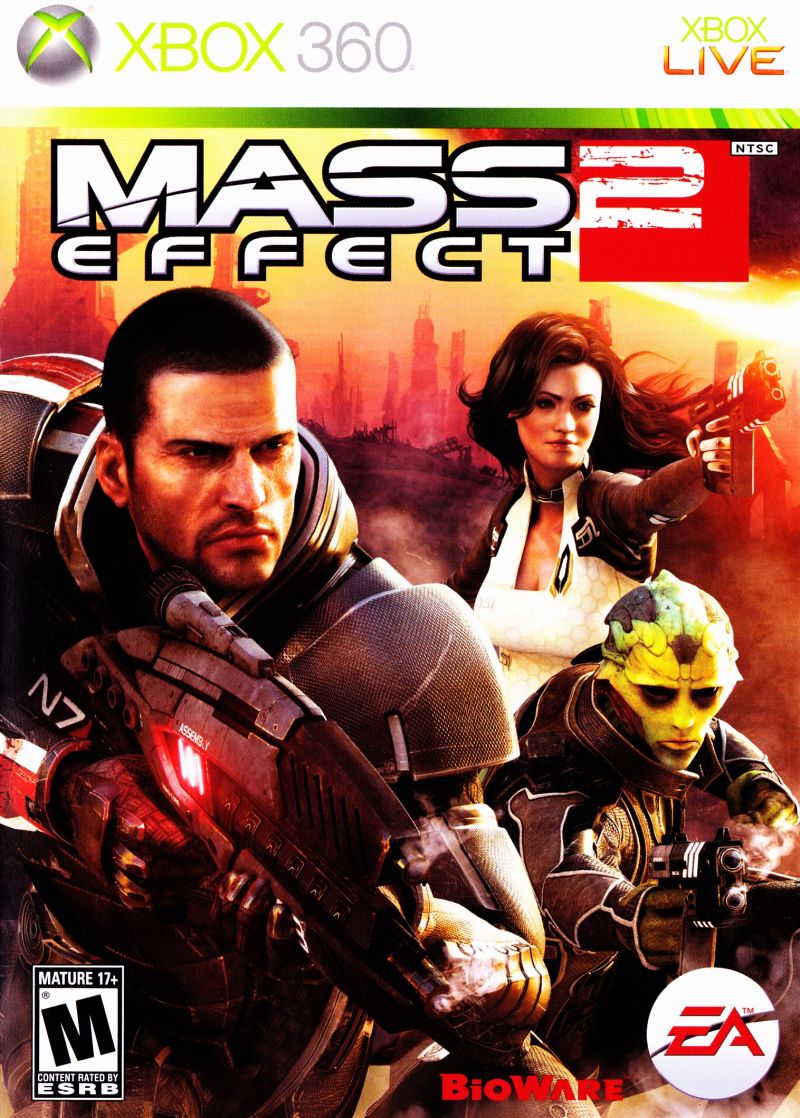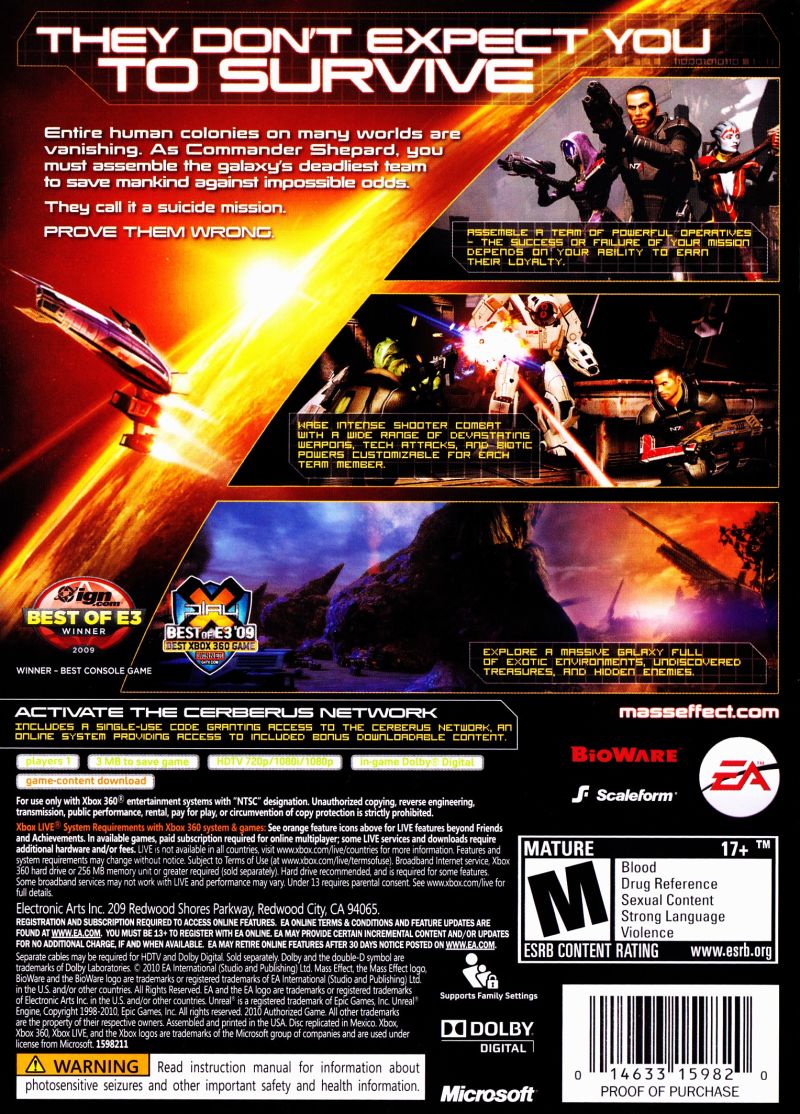Saren and the Sovereign have been defeated and the Citadel has been saved. Depending on the player’s choices made in the first Mass Effect, humanity may be all that’s left of the Citadel Council. Of course that doesn’t keep them from ignoring the former war-hero Shepard who knows that the threat from the Reapers is still real. Instead they send him or her on a boring mission to find some Geth in the Terminus system. The inevitable happens: a new enemy enters the scene, destroys Shepard’s ship, the Normandy and kills the hero of the galaxy. End of game?
No, not really. Cerberus, a known right-wing network, believes the threat from the Reapers to be real and only sees one chance of saving the human race: Shepard. So they invest millions upon millions of credits into the Lazarus project, and two years after Shepard died floating in space, he (she) reawakens on-board the Cerberus Station. The main mission given by Cerberus: find out more about the mysterious race of Collectors who abduct millions of human colonists for an unknown purpose, and figure out their possible connection to the Reapers.
Mass Effect 2 is a hybrid of third-person-shooter and role-playing game. After the prologue, where the player witnesses the destruction of the original Normandy, he has to create a new character and choose from one of six classes each with its own powers. The decision also influences which weapons the player can use during playthrough as only the soldier can wield every weapon in the game. During the course of the game the player and his squad-mates earn experience points by killing enemies, fulfilling missions and hacking safes in order to get a level up. For each level up between 1-20, two talent points are awarded, from 21 to the maximum level of 30 only one, with which the character’s powers can be upgraded in four stages. Once the last upgrade has been purchased, a specialization has to be chosen making the talent even more powerful in one aspect. All this goes also for the player squad mates. The player starts with two companions at his side but can collect up to ten during the course of the game. While he is only allowed to bring two with him into a mission, the collected experience points will be equally shared with those that are left behind.
Fighting is done in a Gears of War-like fashion, with the characters being able to storm into cover and look out to get in a few shots. In addition, health and shield energy are regenerated automatically if the protagonist or his squad mates avoid being hit for a few seconds. To fight the various kinds of enemies, each class has access to different types of weapons like the sniper rifle and heavy pistol for the infiltrator as well as five different kinds of heavy weapons. The weapons now require ammunition which is either dropped by killed enemies or scattered around the level, but there are only two types: one for the heavy weapons and one for all others. Heavy weapons like the grenade launcher come with a very limited supply of ammunition but are very powerful even against full-blown mechs.
Inventory management has been removed entirely. The player is only able to change the weapons load-out of his team from the small set he will collect during the course of the game. His squad mates don’t have different armor any more, only the protagonist’s appearance can be changed by researching new armor parts and put them together to a full suit in his cabin aboard the Normandy. Through research the player also gets access to upgrades to the Normandy, his squad mates and their tools. To do research the player not only needs to find or buy the plans for the upgrade but also needs enough minerals. The four types of minerals in the game are either found in chests during a mission or collected through a scanning mini-game on the galaxy map. In the mini-game the player uses a cursor to move around the face of the planet and send in probes if he finds a mineral source. Side quests can also be found this way and are shown as anomalies on a planet.
Besides the combat, the second most important part of the game are the multiple-choice dialogues. The decisions the player makes here heavily influence the players path deciding if he will become a bad or a good person. To that end not only the dialogue choices are sorted by good, neutral and bad but special dialogue options are available for each path if the player has enough points in it that can end a dialogue prematurely to the heroes favor. Quick-time events have been introduced, where the player can perform an alignment action independent from his current path, such as hitting an obnoxious reporter in the face to shut her up.
As opposed to the first game, the PC- and the Xbox-360-versions are nearly identical. The only difference is the interface which, on the Xbox 360, features a radial menu with the ability to put four powers on hot-keys as opposed to the PC-version which features a mouse-controlled drag-&-drop interface and a quick-slot ribbon for up to eight powers to be activated by using the number keys. On both platforms the player can directly use the powers his squad mates possess.
One of the most important features of Mass Effect 2 is the ability to import a character from the first game. While the character itself including class and appearance can still be changed at the beginning of the game, he will get a huge bonus both in credits, experience points and minerals at the start of the game depending on the character level he had at the end. In addition, hundreds of decisions the player made in the first game will have an impact on more or less important parts of Mass Effect 2. This includes the state of the universe at the beginning of the game, which romances the player pursued and which of his squad mates died or survived the end as well as minor decisions like the survival of the Rachni queen. If Shepard survives the end of Mass Effect 2, the player will be able to carry him over to Mass Effect 3, too.
Cover Art:
Screenshots:





